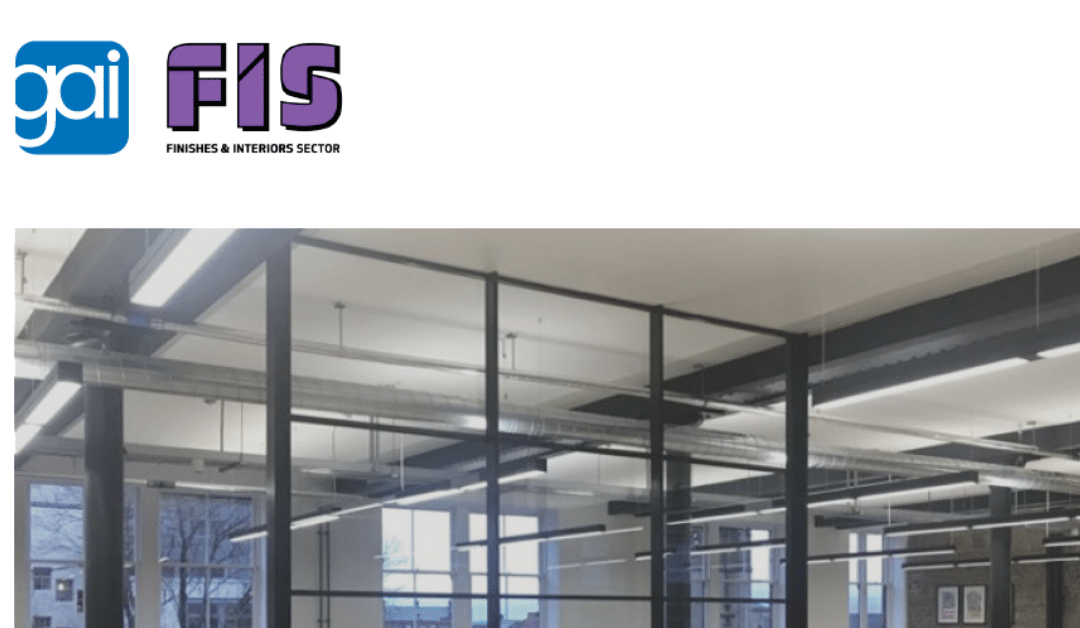A new guide that helps business owners understand the needs of its workforce and help plan safe working spaces that enable social distancing and help companies work effectively during the COVID-19 pandemic has been published today.
Entitled “How Business Owners Can Use Partitioning and Ironmongery to Help Manage Social Distancing” it has been created by two of Britain’s leading construction interior trade organisations – the Guild of Architectural Ironmongers (GAI) and the Finishes and Interior Sector (FIS).
The guide, which calls for changes to the style and layout of traditional open plan offices and other workspaces as a result of the pandemic, provides practical guidance to help business owners understand key considerations they need to make when adapting their workplaces. It aims to provide advice as to how to create the correct solution, addressing the issue of DIY screens that all too often fail to perform properly and can have unforeseen consequences with lighting, ventilation and even escape routes.
The GAI and FIS call the process re-cellularisation – the opposite to creating open plan spaces – and is intended to provide cellular space where social distancing can be provided, where teams can collaborate, and where individuals can find safe concentrated spaces when they are in the office.
“Within less than a year, Covid-19 has impacted every aspect of our lives. We’ve already seen big changes to the way that buildings operate, such as one way systems, and workplaces will need to continue to be responsive as new Government advice is released,” said Douglas Masterson, Technical Manager at the GAI. “Businesses need to protect staff, adhere to social distancing and maintain high standards of hygiene without compromising safety and security.
“This guide will be useful to employers who are looking for proactive solutions. It will help them to identify where measures should be implemented and the types of products that can deliver a safe and secure working environment.”
Cellularisation, as explained in the guide, is the creation of spaces using partitioning, raises several questions which include:
- What are my needs?
- What else should I consider?
- How do I select a partition system?
- What are my ironmongery requirements and can I introduce a touch free or antimicrobial solution?
- Will I need to control the doors through hold open devices or door automation?
- Is there a part that access control and electronic locking can play?
- How do I organise the installation?
Performance considerations, including fire resistance of the partitioning and doors, reducing sound transmission and privacy, also must be considered along with the need for increased ventilation which has a substantial impact on reducing viral infections between occupants.
The guide also shows ways in which new partitions can look by using solid, glazed, part glazed and double glazed elevations, and adding blinds or manifestation which can reinforce a corporate identity or add images of outdoor landscapes to the space.
Joe Cilia, Technical Director at FIS, added, “We wanted to produce an accessible and useful guide that can be used by any business to understand how to approach the issue. The flow chart that we produced with the GAI is easy to follow and ensures that any unknown unknowns are dealt with.”
The guide discusses all aspects of partitioning and how employers can sub-divide working space to protect staff, including using the right ironmongery and how to reduce infection via touch points.
The guide can be downloaded from www.thefis.org or www.gai.org.uk/IndustryUpdates

